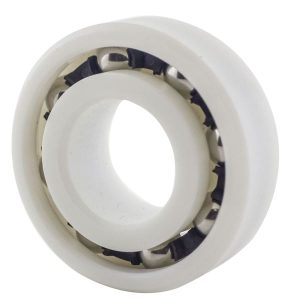
Bearings are found in a variety of machinery and equipment parts. Consisting of a cage, inner race, outer race and a set of balls, they are designed to reduce friction. Bearings literally “bear” the force of a part as the part moves. While most bearings feature a similar design, though, some of them are radial, whereas others are thrust.
What Are Radial Bearings?
Radial bearings are designed specifically to support a radial load. A radial load is a force that occurs perpendicular to a rotating shaft. Motors, for instance, typically feature a rotating shaft. On one or both ends of the rotating shaft, you may discover a radial bearing. Radial bearings are ball-based bearings that support a radial load.
The origins of radial bearings can be traced back to the 19th century. In 1869, Jules Suriray filed a patent for the world’s first radial bearing. Suriray’s design was initially used in bicycles, but it paved the way for other applications.
What Are Thrust Bearings?
Thrust bearings are designed specifically to support an axial load. They are also known as axial loads for this reason. An axial load is a force that occurs along the axis of a rotating shaft. Like their radial counterparts, they are designed to reduce friction. Thrust bearings, though, are better suited for applications involving an axial load.
Most thrust bearings feature balls enclosed in a ring. With that said, some of them feature a tapered design. Tapered thrust bearings have tapered rollers that point towards the bearing’s axis. In addition to tapered, other types of thrust bearings include spherical, fluid and magnetic.
Differences Between Radial and Thrust Bearings
Bearings are typically classified as either radial or thrust depending on the type of load they are designed to support. Radial bearings are designed to support a radial load, whereas thrust bearings are designed to support a thrust load.
Radial is the most common type. Radial bearings feature the traditional design consisting of a cage, inner race, outer race and a set of balls. Thrust bearings are less common, and they often feature a different design depending on the particular type of thrust bearing.
All bearings support a load. When choosing bearings, you should consider the type of load to which they’ll be exposed. For a radial load, you should choose radial bearings. For an axial load, you should choose thrust bearings.
